Rare is the interior designer who will cheerfully decorate a spec house — and for good reason. How to furnish a home for occupants who have yet to make themselves known? Such projects oblige the designer to imagine the property’s prospective owners and act on instinct. All the minute decisions that are normally made in consultation with the homeowners — tile and floor finishes, trim details, light fixtures, wall paint, a color palette, and furniture — become wild card questions in an elaborate guessing game.
Given the stakes, most designers play it safe with innocuous interiors, clothing the house in the sartorial equivalent of plain dress. But those designers are not Alicia Murphy. For her, spec houses are a chance to take risks. She’ll try out bold color combinations and finishes that might otherwise prove a hard sell to homeowners.
The developers she works with, by contrast, grant her creative license. “I love ‘design-to-sell’ projects,” says Murphy, who is based in Amagansett, “because they allow me to respond to the space in an interesting way. Clients can have a hard time visualizing things which I know would look amazing. They’ll say, hmmm…a dark lacquered ceiling? That’s a big commitment!”
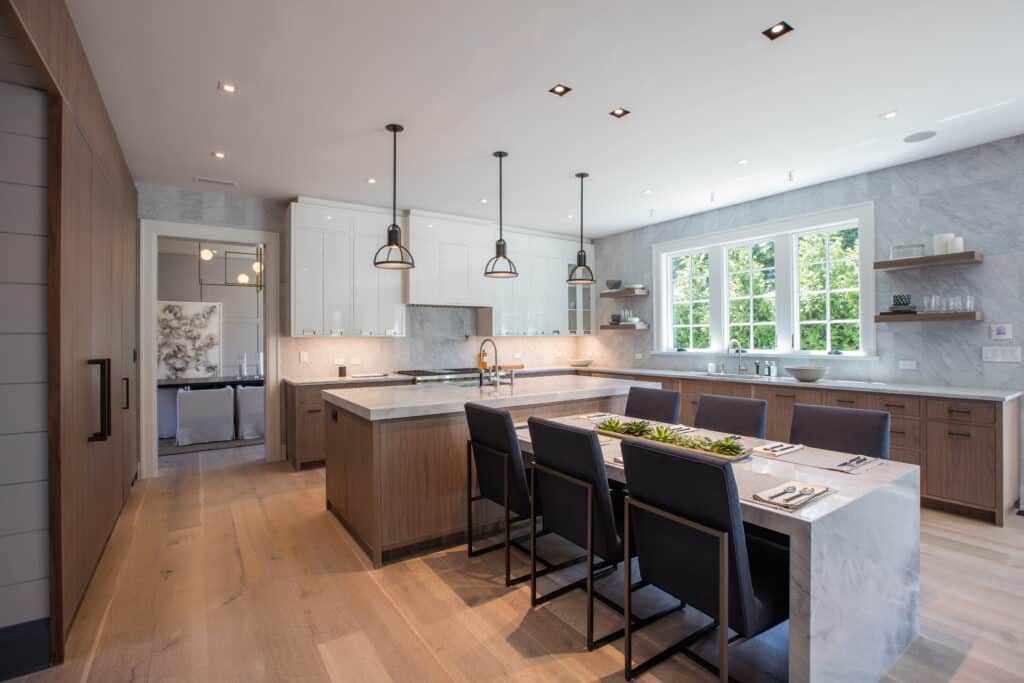
Murphy, who grew up in Huntington, Long Island, is known both for the youthful elegance of her work and her youthful clientele. In this context, one of her favorite projects in recent years was a 7,300-square-foot farmhouse-inspired home in Wainscott. Hired by a local developer to make the home move-in ready, Murphy painted the front door, the transoms over the interior doors, and the entrance hall window frames in black, “a cool design decision,” she says, “that adds dimension to hallways and rooms and served as a connecting color thread throughout.” Other touches that make a statement are the faux shagreen wallpaper on the dining room ceiling and the Murano glass chandelier — a custom piece by Venice M — over the live edge dining table.
The ‘design lab’ approach paid off in spades for Murphy. The house sold in just two weeks for $7.2 million, statement ceilings and all. “A lot of my clients live in brand new, high-end, ultra-modern buildings in the city,” she explains, “so I assumed the same would be true of most prospective buyers. I imagined a young family who liked the idea of a traditional Hamptons home, but not the lack of modern conveniences that come with it. My task was to reimagine those traditional spaces in a modern way with the level of comfort and detail my clients expect.”
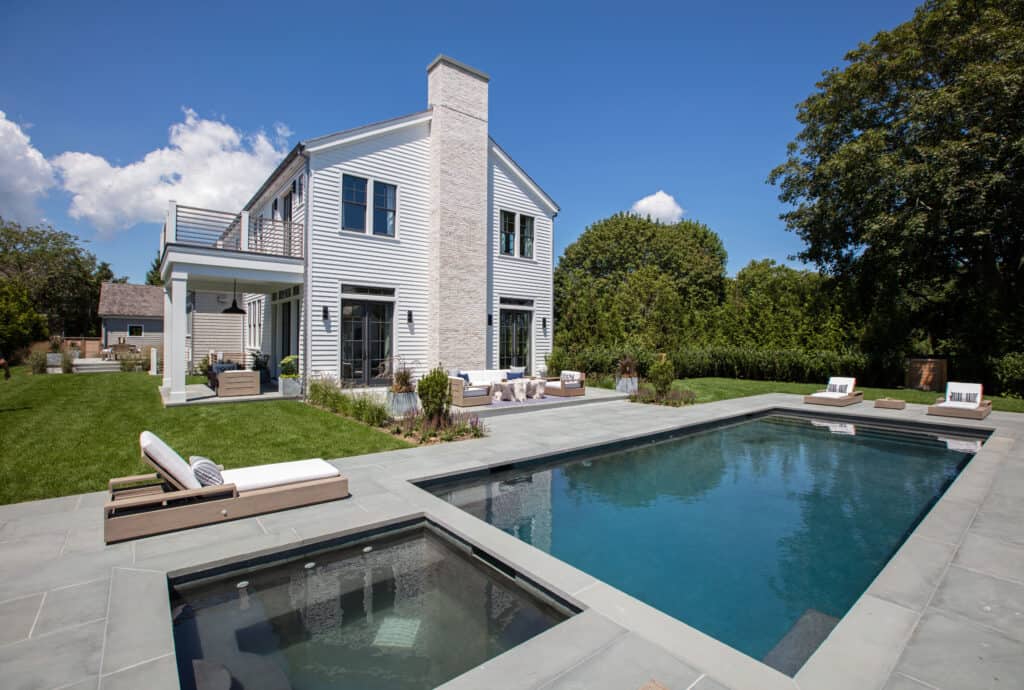
For example, the main bedroom has a fireplace — just the sort of cozy touch you’d expect to find in a farmhouse. But Murphy sought to infuse the space with a slightly more modern vibe, so she installed a limestone surround and a wood mantle which she painted in Farrow & Ball’s Charleston Grey with a high gloss finish for a lacquered look. She also paneled the fourteen foot-high ceiling in oak, both in deference to the farmhouse theme and to add warmth to the space. “Rooms with double-height ceilings can look cold and cavernous if you only have white sheet rock on the walls,” Murphy explains.
Without ever losing sight of the family she imagined would one day live in the house, she furnished the rooms with pieces from Restoration Hardware and vintage items from her own collection. Her instincts, as it turned out, were right on the money. The place went to a young couple from the U.K. who wanted a Hamptons retreat, but who weren’t inclined to undertake a transatlantic design project. Fortunately, they were able to move right in, because Alicia Murphy had already made their new house a home.






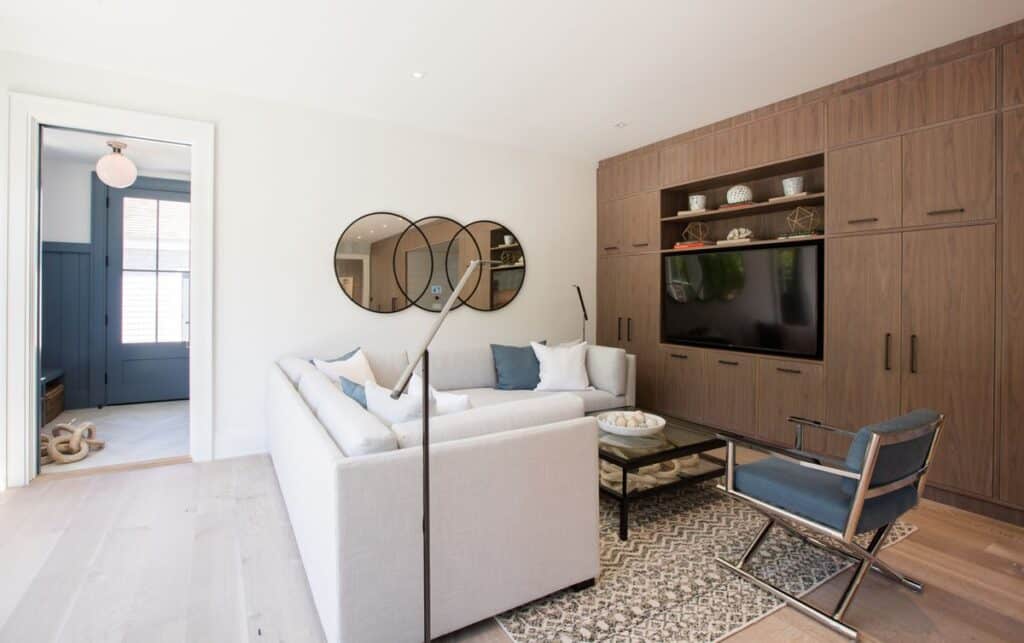
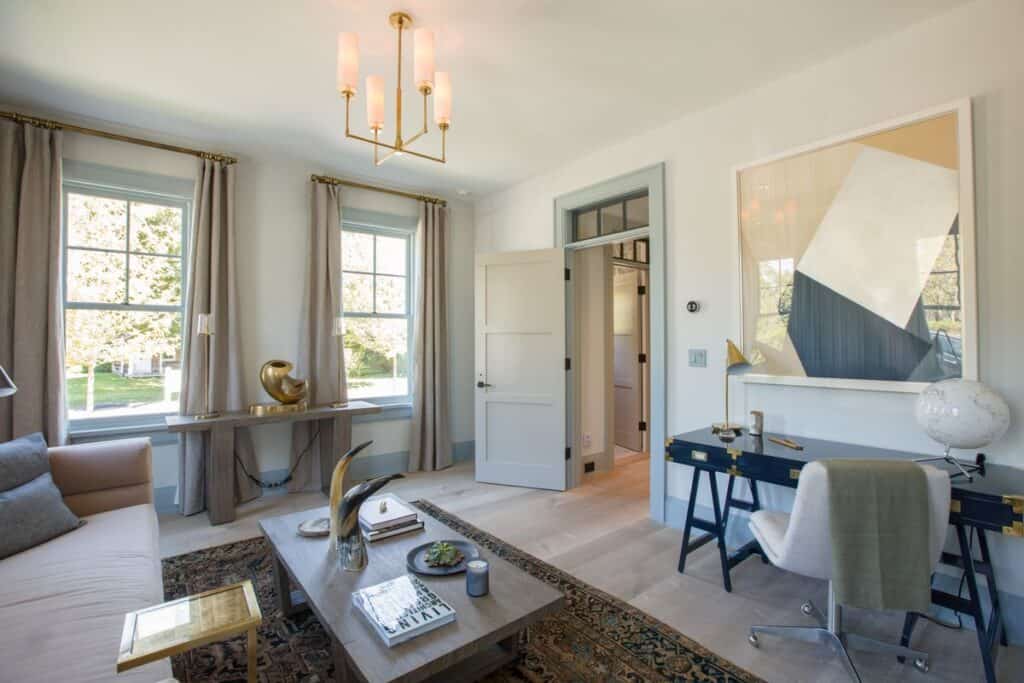
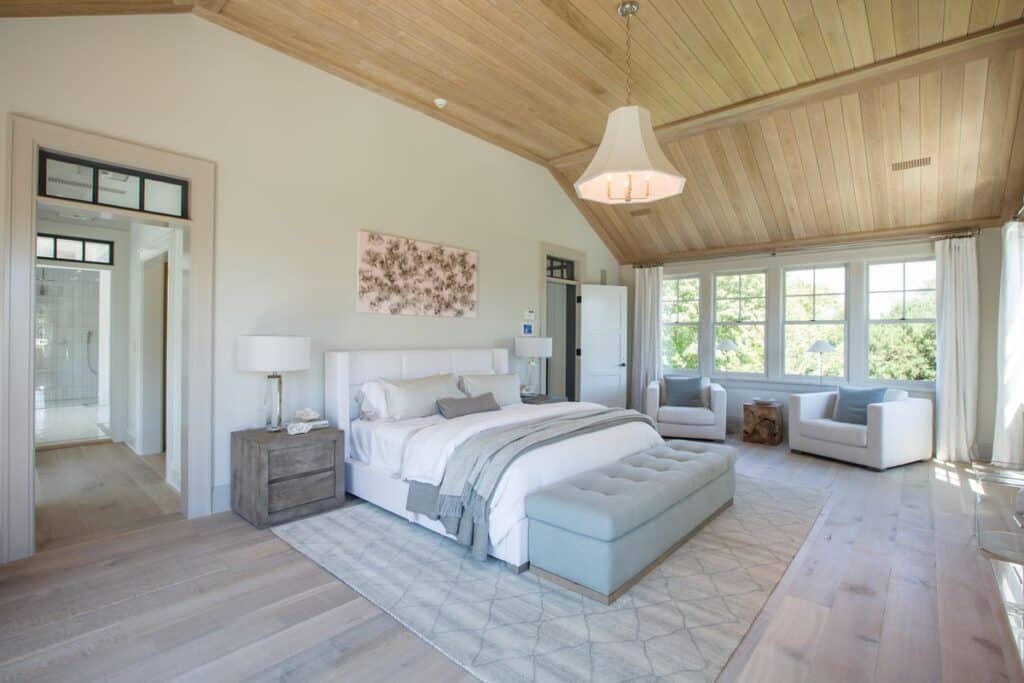
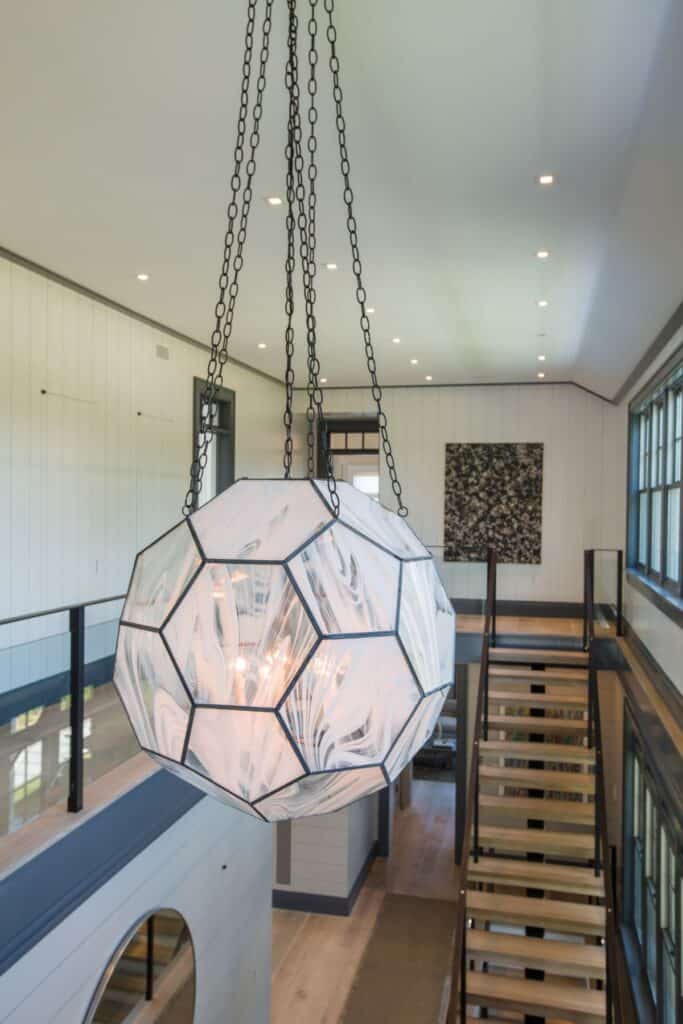





!['The Maples' is a prestigious generational compound of two extraordinary estates: 18 Maple and 22 Maple. This rare offering, designed by luxury architect Lissoni partners New York and developed by visionaries Alessandro Zampedri-CFF Real Estate and JK Living, redefines opulence with the highest quality of craftsmanship and captivating views of the Atlantic Ocean. Represented by @nycsilversurfer and @challahbackgirl of @douglaselliman. [link in bio]](https://hamptonsrealestateshowcase.com/wp-content/uploads/sb-instagram-feed-images/438891010_1083749139481747_7890082604579275354_nfull.jpg)
![Featuring 360-degree water views on Mecox Bay, the Atlantic Ocean and Channel Pond, 1025 Flying Point offers the ultimate beach cottage that is flooded with natural light. With panoramic views, proximity to the ocean, and a private walkway to Mecox bay for kayaking or paddle boarding, this truly is a special retreat. Represented by @ritcheyhowe.realestate and @hollyhodderhamptons of @sothebysrealty. [link in bio]](https://hamptonsrealestateshowcase.com/wp-content/uploads/sb-instagram-feed-images/438994305_737511778456166_4602476013493875279_nfull.jpg)
![Attention advertisers! 📣 Secure your spot in the highly anticipated Memorial Day edition #HRES. Reach thousands of potential clients and showcase your brand in one of the most sought-after publications in the Hamptons, NYC, Palm Beach, and beyond. Contact us now to reserve your ad space! [link in bio]](https://hamptonsrealestateshowcase.com/wp-content/uploads/sb-instagram-feed-images/438549843_275102939023235_6718257301437562124_nfull.jpg)
![You eat with your eyes, and on the East End, it’s important that what you eat looks just as good as how it tastes. At @rosies.amagansett, the restaurant itself is plenty photo-worthy with blue ceramic tiling and yellow and white striped fabric wallpaper. But for a dish that will light up your photos, head directly to the salmon tartare! [link in bio]](https://hamptonsrealestateshowcase.com/wp-content/uploads/sb-instagram-feed-images/437094269_7296727147115953_1594410326824303644_nfull.jpg)

![We were honored to be the media sponsor for @blackmountaincapital's open house event with @jameskpeyton and @jfrangeskos at 11 Dering Lane in East Hampton! Other sponsors included @landrover, Feline Vodka, @rustikcakestudio, @la_parmigiana, @lahaciendamexicangrill11968, @homesteadwindows, Stone Castle, @talobuilders, and @thecorcorangroup.
A big thank you Carrie Brudner of Black Mountain Capital for putting together this fabulous event! [link in bio]](https://hamptonsrealestateshowcase.com/wp-content/uploads/sb-instagram-feed-images/437081213_762912965932136_6847332836522786568_nfull.jpg)

![Blooms Galore at the Long Island Tulip Festival! 🌷✨ Mark your calendars for April 15th as the vibrant tulips at @waterdrinkerlongisland burst into full bloom! Enjoy a day filled with colorful splendor, food trucks, live music, and more. [link in bio]](https://hamptonsrealestateshowcase.com/wp-content/uploads/sb-instagram-feed-images/437083429_974242677583725_6855805712693638343_nfull.jpg)
